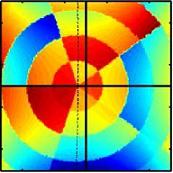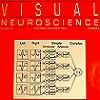Various people have asked me about this so here is a quick summary of the methods I have used, in the order in which I have encountered them, with some notes on pros and cons.
Mouse
Pros: Cheap, easy to implement, can use a wireless mouse to avoid wires trailing all over your lab and being a potential hazard to subjects.
Cons: A bit fiddly, only 2 possible responses, can’t get accurate reaction times.
Recommended for: Your standard two-alternative psychophysics experiment where accurate reaction times are not required.
Keyboard
Pros: Cheap, easy to implement, can use a wireless keyboard to avoid wires trailing all over your lab and being a potential hazard to subjects.
Cons: Fiddly, lots of possible responses so hard to get fingers on right keys, can’t get accurate reaction times.
Recommended for: Multi-alternative psychophysics experiment where subjects will be lab members and/or experienced, you can’t be bothered to get anything more elaborate working, and accurate reaction times are not required.
Ablenet switches
Pros: Easy to implement, chunky, “clacky” so provide auditory feedback when pressed, big so easy to hit, robust so stand a walloping from enthusiastic child participants, come in bright colours which make them look friendly, can buy plastic caps for them so you can easily put pictures on them to indicate meanings.
Cons: Quite pricey, can’t get accurate reaction times.
Recommended for: Experiments with children.
Cedrus response box
Pros: In theory: accurate response times, coloured buttons, can move colours around, buttons come with caps for you to add your own pictures to them.
Cons: I was unable to get it working reliably. Disclaimer – this is just my personal experience and does not imply any fault of the Cedrus box.
More details here.
Response Time Box
Pros: Accurate response times (haven’t actually tested this myself), easy to get working, Matlab code available, relatively cheap, also has photodiode.
Cons: Lacks some bells & whistles.
Recommended for: Psychophysics experiments where precise reaction time is required but you don’t have very much to spend.
RESPONSEPixx
Pros: Nanosecond-accurate response times (haven’t actually tested this myself), collects times of responses independently of PC (helps minimise load on CPU during demanding stimulus generation), buttons can be programmed to light up to cue responses, nice chunky feel, easy for subjects.
Cons: Expensive (requires purchase of DATAPixx), requires you to write more specialised code.
Recommended for: Psychophysics experiments where precise reaction time is required and money is no object :-).



















